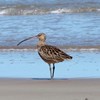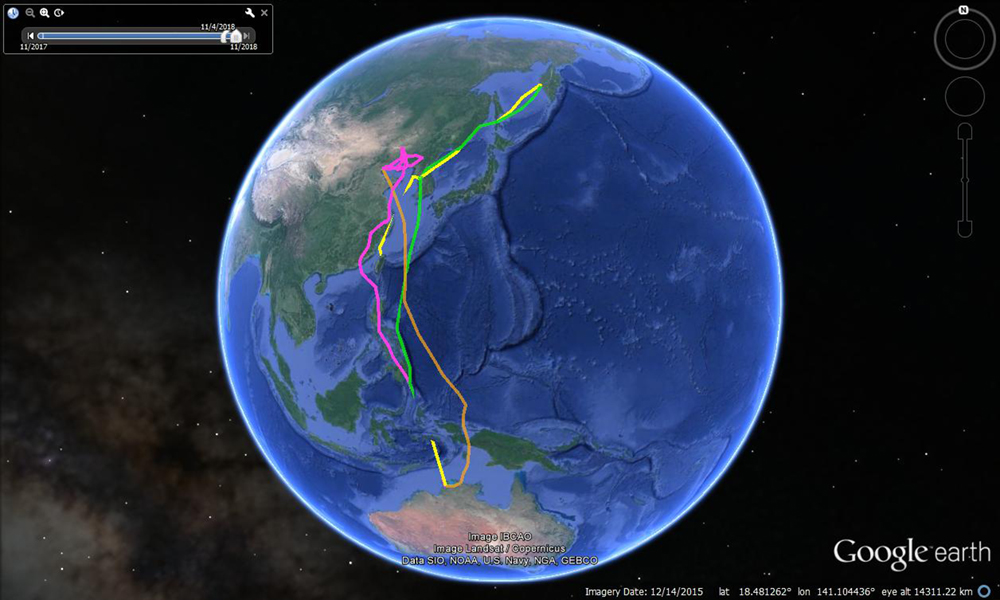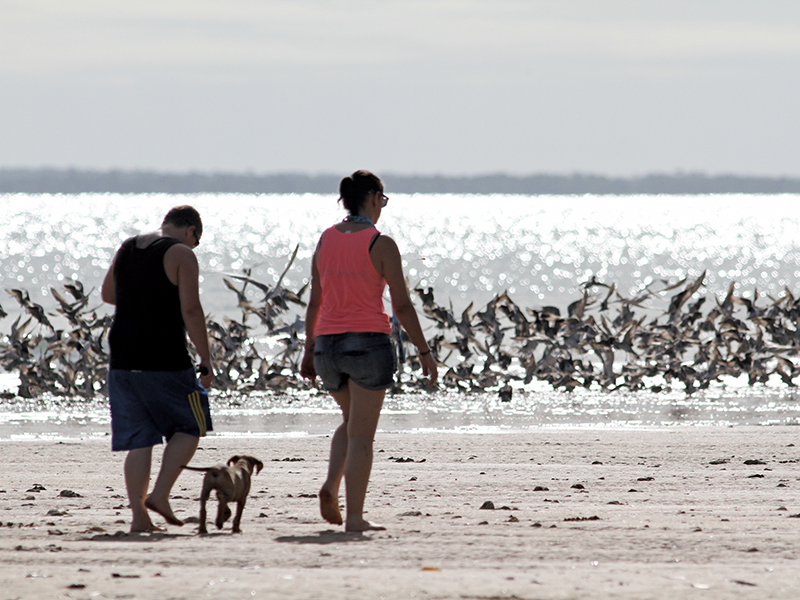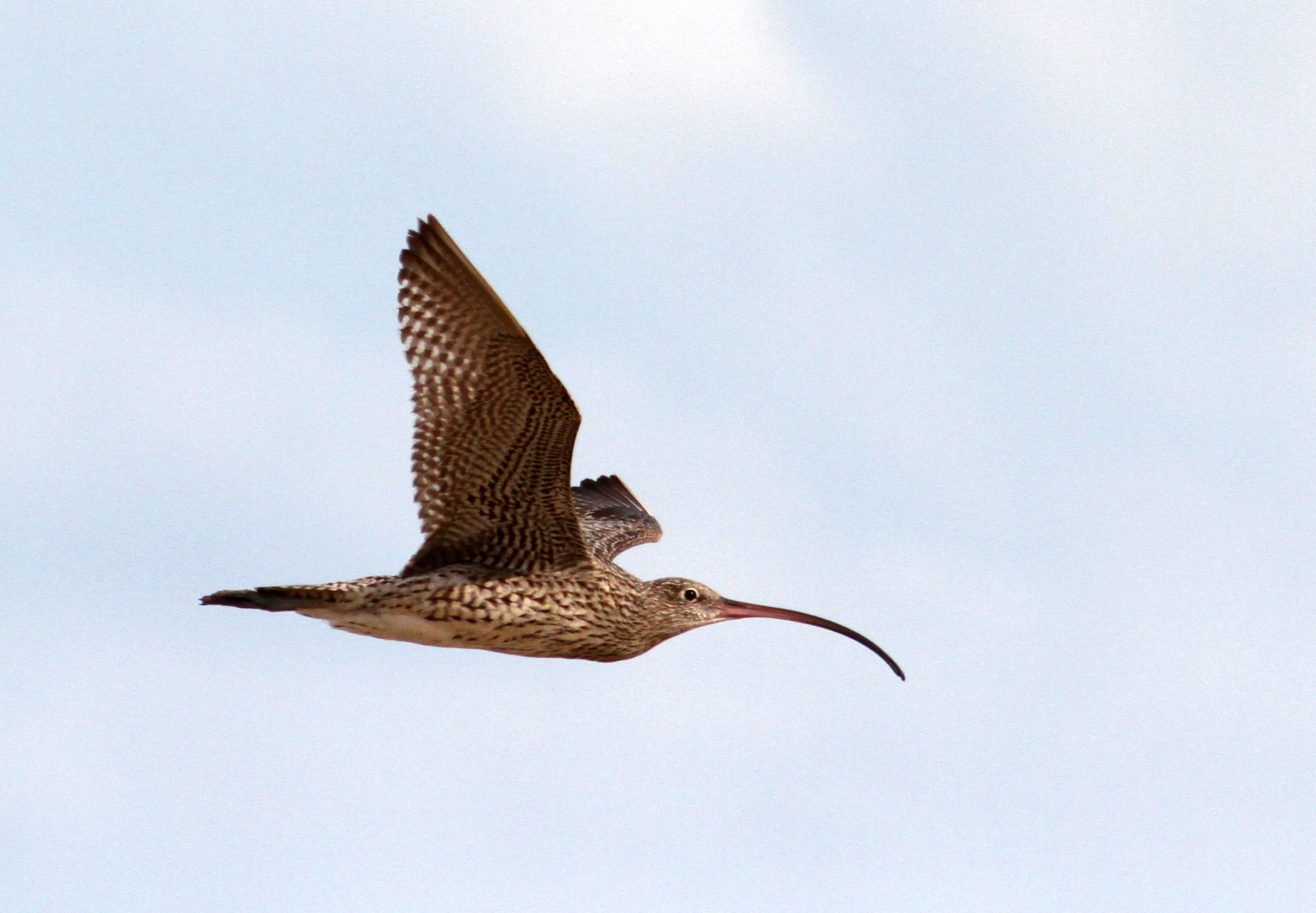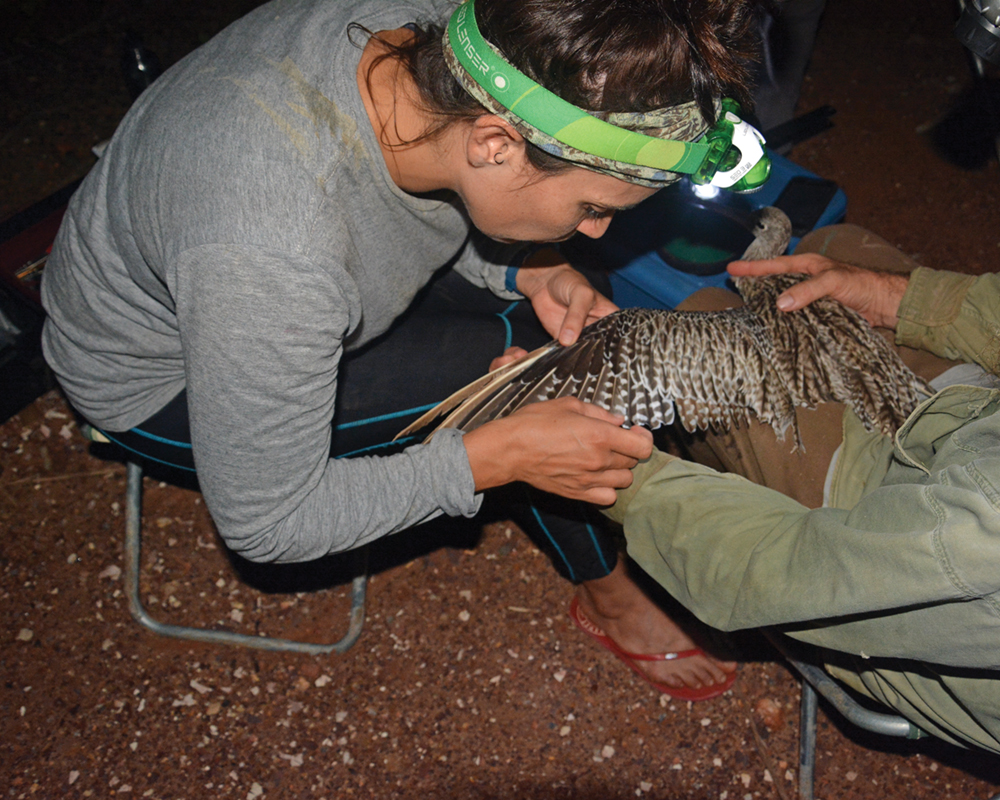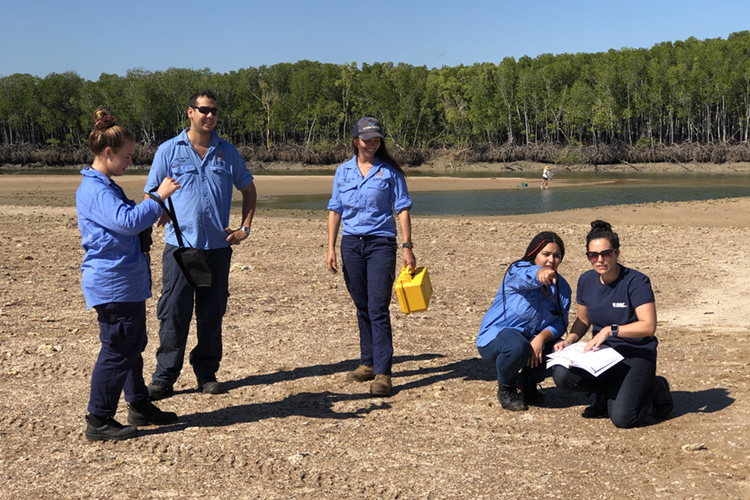
Larrakia action for the far eastern curlew on their saltwater country
Tuesday, 20 August 2019For the Larrakia Land and Sea Rangers, the sight of a shell midden in coastal saltpans tells a long history of culture and how their ancestors are connected with the intertidal and mangrove environment. Through a different lens, the Larrakia Rangers also see these shell middens as areas where their culture overlaps with the habitat used by the Critically Endangered migratory shorebird the far eastern curlew. The Larrakia Rangers are working with hub researchers from Charles Darwin University Amanda Lilleyman and Stephen Garnett to help protect the curlew and the coastal habitat it uses.
Fifteen young Indigenous rangers from the urban-based Aboriginal ranger group Larrakia Nation Aboriginal Corporation have been working in the coastal landscape around Darwin Harbour to help protect this migratory shorebird that visits their land every year. The far eastern curlew is a large shorebird that breeds in the northern hemisphere before moving through eastern Asia and then onto Australia and New Zealand, where it spends the southern summer in intertidal habitats feeding on crabs and shellfish.
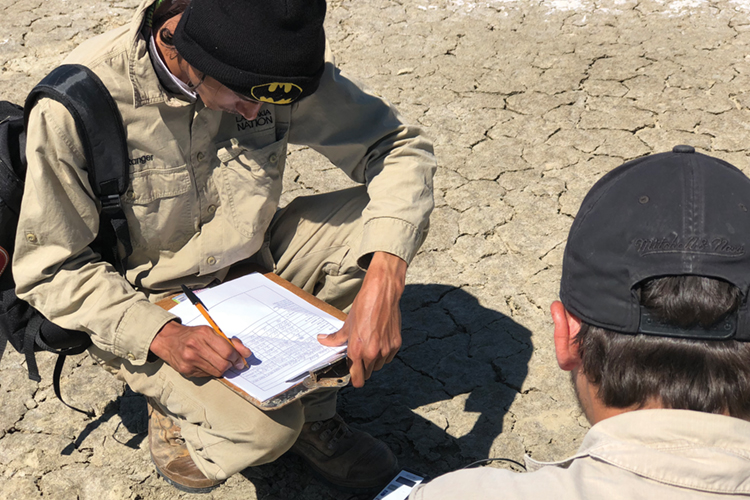
From tracking to site protection
“We’re taking action in locating and understanding the birds from tracking them throughout the years and throughout various environmental conditions, such as the monsoon season, and alongside development. From this we can look at how birds might respond to larger changes in their habitat,” ranger Tanisha Cabbidu said.
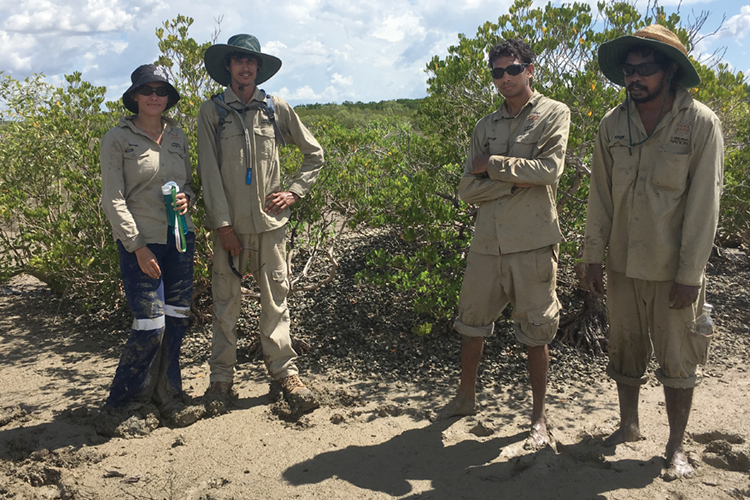
Larrakia Rangers (L-R) Jessica Puntoriero, Kyle Lew-Fatt, Nelson Williams-Browne and Jimmy Que-Noy in front of a shell midden. The middens show that Larrakia people have been custodians of Darwin Harbour for millennia. Photo: Amanda Lilleyman
Larrakia presence on country
The Larrakia people have a strong connection with saltwater. Working in Darwin Harbour strengthens this connection with the coastal environment. The numerous shell middens on Larrakia Country are evidence that the Larrakia people have been custodians of the Darwin Harbour region for millennia. Working on the water to undertake curlew surveys has other benefits for the Larrakia Rangers, as while they are out on the boat they can also monitor culturally important places and patrol the harbour for compliance amongst harbour users.
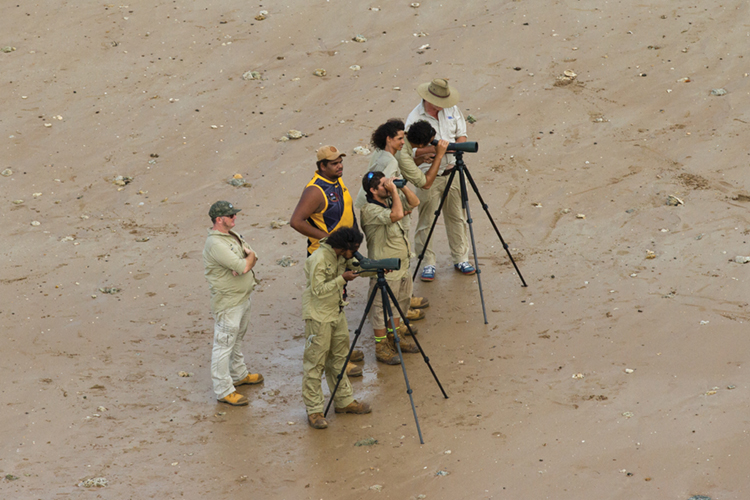
Ranger Jimmy Que-Noy would like to see the Darwin community getting onboard with good management practices that will improve conservation outcomes for the threatened curlew.
The Larrakia people play an important role in the ongoing health of Darwin Harbour and the species that use it. The far eastern curlew, for one, will be better off as a result of the work of these dedicated local Indigenous rangers.
This Threatened Species Recovery Hub project is a collaboration between Darwin Port, Charles Darwin University, The University of Queensland and the Larrakia Rangers. It is supported by the Australian Government’s National Environmental Science Program.
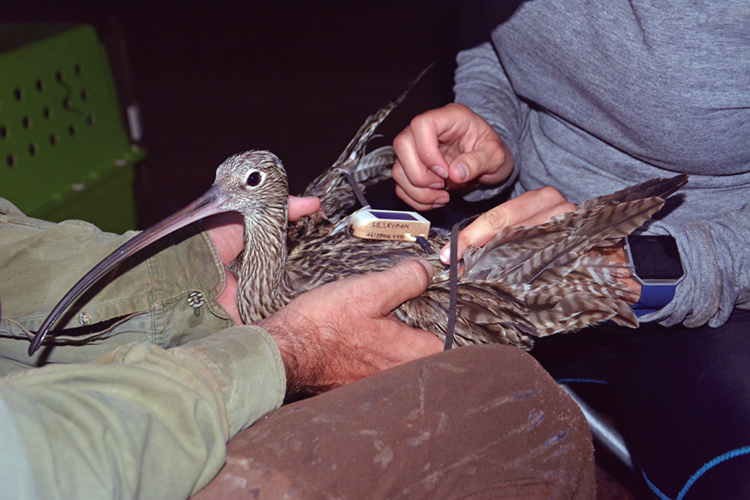
Attaching a GPS tracker to a far eastern curlew. Photo: Gavin O'Brien
For further information
Larrakia Rangers - Ben Smith - ranger.manager@larrakia.com
Top image: Larrakia Rangers Gabrial Millar, Stephen Dawson, Jessica Puntoriero and Tanisha Caibbidu and researcher Amanda Lilleyman working together at Lee Point, Darwin. Photo: Jaana dielenberg
